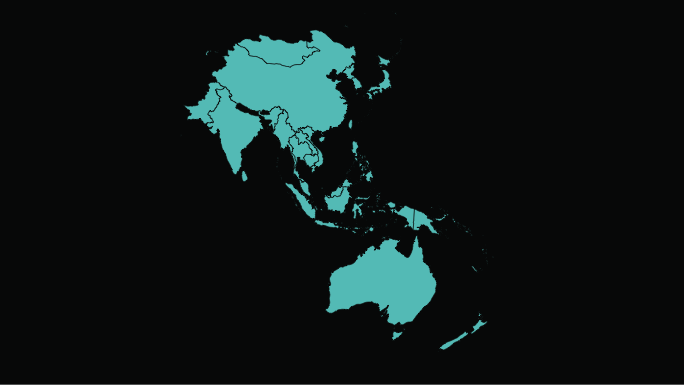United States, Canada, Mexico
Our economic and market outlook at midyear 2023
June 26, 2023
While much has changed over the first half of the year, the key aspects of our initial economic and market outlook for 2023 remain intact. Inflation has eased, but reducing price pressures tied to wage growth will take longer. Central bank rate cuts are unlikely before 2024. A mild recession in the U.S.—and in Canada and Mexico, among other nations and regions—is more likely than not.
The Fed's clear path
Read video transcript
Roger Aliaga-Díaz: At midyear 2023, we’re tracking closely with the scenario we set forth early this year. Inflation peaked in 2022 in the U.S., but reducing price pressures tied to the strength in the labor markets and wage growth would take longer.
We anticipated that the Fed would not achieve inflation targets before 2024 and that the Fed would actually need to continue their aggressive tightening cycle into 2023 before pausing.
We also anticipated that the Fed would be reluctant to cut rates this year given the need to cool down wage growth.
Based on all this, we saw a strong likelihood of a recession in the United States this year.
As of today, economic indicators still suggest that a Fed-induced recession is very likely.
In fact, we believe the Federal Reserve has still a bit more work to do to bend the inflation curve and ensure that inflation is heading towards the right level, the target level of 2%. We still maintain the Fed should not start cutting rates anytime soon, certainly not this year.
Unfortunately, the Fed still has no choice. Not raising interest rates high enough and keeping them there long enough would open the door for runaway inflation, and that eventually would lead to greater job losses and a deeper recession than the one we expect.
With the significant risks that we saw earlier this year in terms of banking-sector stress and the debt ceiling debate and potential default on U.S. government debt, with those risks apparently behind us, the Fed path is now clear.
Yet, a few things have surprised us. For one, the strength of the labor market: We would have thought that by now we would be seeing some cracks in the labor market. But job growth remains strong, and the unemployment rate continues to hover around historical low levels below 4%. The U.S. consumer also has remained incredibly resilient throughout the tightening cycle.
So, whether a recession is declared later this year or in 2024 is really a matter of timing. We do expect growth to slow, and we expect the unemployment rate to start rising also. The job gains that are slowing will actually turn into outright job losses at some point, unfortunately. And this is just a function of the Fed rate hikes doing what they’re intended to do.
Why haven’t rate hikes already resulted in a broader slowdown in the economy? Part of the answer is that it takes time for monetary policy to work its way through the economy.
But also, we believe the neutral rate may be higher than what we’d think. The neutral rate is the theoretical rate that reflects an economy in balance.
If that's true, the Fed may need to raise rates to 6% or even higher to beat back inflation and finish the job.
United States
Our outlook for year-end 2023
0.75%
Economic growth,
year-over-year
The recovery from the shortest U.S. recession in more than 150 years—a two-month downturn in early 2020—has endured one of the most aggressive interest rate-hiking cycles in Federal Reserve history. Recent growth has been stable at about 2%, annualized. We still assign a high probability to a recession, though the odds have risen that it could be delayed from 2023 to 2024.
3.3%
Core inflation, year-over-year
Our base case is for the pace of consumer price increases to continue easing. Shelter inflation should slow in the second half of 2023 and return to its pre-pandemic pace by 2024. Slowing momentum in labor markets should also lower ex-shelter services inflation later this year.
5.25%–5.5%
Monetary policy rate
Given the long and variable lags between monetary policy shifts and discernible changes in economic activity, Federal Reserve policymakers could decide that the 500 basis points (5 percentage points) of interest rate hikes they’ve enacted since March 2022 are enough to knock inflation down to their 2% target. But we view at least one more rate increase as probable.
4.5%
Unemployment rate
In our initial outlook for 2023, we described a weakening of the labor market (along with slowing growth) as a necessary condition for falling rates of inflation. The labor market has remained resilient even as disinflation has continued. Unemployment remains below 4%, where it stood when the Fed started its current rate-hiking cycle. We continue to expect some softening as a necessary condition for further progress on inflation.
What I’m watching
Consumer spending and the Fed’s rate-hiking cycle
“Consumer spending has remained remarkably consistent over the past year despite persistent inflation. If spending remains on this path, the Federal Reserve will have more work to do. Increasing the policy rate another three-quarters of a percentage point is not out of the question under such conditions.”

Josh Hirt,
Vanguard Senior Economist
Notes: The Federal Reserve sets the federal funds rate target—typically a range—as a goal for the level of short-term interest rates. The pre-pandemic trend shows the average pace of growth in real consumer spending between 2017 and 2019.
Sources: Vanguard calculations, based on U.S. Bureau of Economic Analysis data as of June 12, 2023.
What I’m watching
Declining import, wholesale prices bode well for consumers
“Import prices have been easing rapidly since March 2022—and outright declining since February 2023—thanks in part to the rebuilding of supply chains disrupted by the COVID-19 pandemic. Producer or wholesale prices have been falling almost as quickly, helping to curb actual and expected consumer inflation toward the 2% target set by Federal Reserve policymakers. We think they will get there in 2025.”

Asawari Sathe,
Vanguard Senior Economist
Notes: Changes in commodity prices use non-seasonally adjusted data for all commodities, based on 2021 trade values. All other data include seasonal adjustments. Core prices exclude food and energy. The Producer Price Index (PPI) measures wholesale prices. The Consumer Price Index (CPI) measures retail prices.
Sources: Vanguard calculations, based on data from Refinitiv and Moody's through May 31, 2023.
What I’m watching
A fading wage premium reflects a loosening labor market
“The wage increases typically commanded by workers who change employers over and above the gains made by workers who stick with their employers is a window into labor market conditions. When the labor market tightens, employers first raise wages to attract new talent and then to retain current workers, factors that can boost both economic growth and inflation. The wage-gain advantage for job switchers has been waning since the middle of 2022—an encouraging sign that inflationary pressures stemming from the labor market are abating.”

Adam Schickling,
Vanguard Economist
Notes: The chart is based on the Federal Reserve Bank of Atlanta’s Wage Growth Tracker, which uses data from U.S. Census Bureau surveys of nonfarm workers to estimate the median level of year-over-year changes in hourly wages. Each data point is an average of that month’s median wage growth rate and the median rates of the two preceding months.
Sources: Federal Reserve Bank of Atlanta data as of April 30, 2023.
Canada
Our outlook for year-end 2023
0.8%
Economic growth,
year-over-year
Although economic growth has recently surprised to the upside, our proprietary leading indicators index remains in negative territory. We expect a mild recession late in the year or early next year as the effects of higher interest rates spread. The Canadian economy depends heavily on its larger, southern counterpart, and if full-year growth differs from our forecast, we believe it’s likely to disappoint.
3.2%
Core inflation, year-over-year
We expect inflation to continue moderating this year. But upside risks remain, in part because shelter costs account for a relatively large share of household spending and the home loan market is dominated by variable-rate and short-term fixed-rate loans.
5%
Monetary policy rate
A surprise June interest rate hike by the Bank of Canada brought the annualized rate on overnight loans between banks to 4.75%. We expect at least one more rate hike in 2023. Because of high levels of household debt and the sensitivity of housing costs to rates, monetary policy is restrictive and becoming more so as inflation recedes.
5.5%
Unemployment rate
Since spiking to a pandemic-induced peak of 14% in 2020, unemployment has slid to multidecade lows near 5%—well below its longer-term average of about 7%. We expect it to rise in the second half of 2023 as monetary policy further tightens and the economy slows.
What I’m watching
A source of optimism: Slowing energy and transport prices
“Just as accelerating transportation and energy costs played meaningful roles in Canada’s mid-2022 inflationary peak, their deceleration since then has eased the headline pace of price increases for goods and services. We believe inflation will continue to moderate in Canada in the second half of 2023 and 2024, though the moderation may be more gradual.”

Bilal Hasanjee,
Vanguard Senior Investment Strategist
Notes: The “Other” component reflects the sum of five categories: household operations and furnishings and equipment, clothing and footwear, health and personal care, recreation and education and reading, and alcoholic beverages and tobacco products.
Sources: Vanguard calculations, based on data from Refinitiv, Moody’s, and the Bank of Canada as of April 30, 2023.
Mexico
Our outlook for year-end 2023
1.8%–1.9%
Economic growth,
year-over-year
As we suggested in our 2023 outlook, the rate of growth in U.S. inventories (excluding autos) has slowed in 2023 and, in turn, so have exports from Mexico to the United States—the destination for 70% of Mexico’s exports. We expect economic growth to slow from roughly 4% in recent quarters to less than 2% by year-end.
5.6%
Core inflation, year-over-year
The headline level of price increases has been moderating faster than the core rate, which excludes food and energy prices and may provide a clearer portrait of underlying price trends. By either measure, inflation remains well above the central bank’s 3% target.
11.25%
Monetary policy rate
We expect the Bank of Mexico to maintain its current rate target through year-end for a few reasons. Interest rates already exceed the rate of inflation, which has been falling, and falling inflation with stable nominal rates means higher real (inflation-adjusted) rates, which may restrict growth. Rate cuts are likely in 2024 as the central bank moves to bolster the economy.
3.5%
Unemployment rate
“The labor market remains strong,” the Bank of Mexico said in its June policy statement, and we agree. Its strength does not preclude some softening, however, which we expect as the effects of tight monetary policy—in the United States as well as Mexico—continue to build.
What I’m watching
Leading economic indicators suggest continued growth
“Robust consumer spending and fixed investment have recently supported economic growth in Mexico. With moderating inflation, real wage growth should continue to accelerate, suggesting that consumption could continue to expand. ‘Nearshoring’ activity—companies moving part of their production to countries close to their markets—is another positive over the medium term. Our Leading Economic Indicators Index summarizes our outlook. Nearly half of the index’s underlying indicators recently implied strong future economic activity, and more below-trend signals have been improving.”

Vytas Maciulis,
Vanguard Economist
Notes: The Vanguard Leading Economic Indicators Index (VLEI) for Mexico, created to infer developing economic trends, incorporates dozens of variables for the consumer, labor market, manufacturing, exports and imports, and financial markets. Each variable is assigned a weight based on its historical correlation with economic activity and its predictive power.
Sources: Vanguard, as of June 15, 2023.
The outlook for emerging markets
Inflation appears to have peaked in Latin America, but we expect central banks to lower their interest rate targets slowly. We anticipate full-year 2023 growth of around 1.5% for the region, slowing moderately in 2024. We foresee core inflation persisting at around 6.3% in both 2023 and 2024.
Notes: All investing is subject to risk, including the possible loss of the money you invest. Past performance is no guarantee of future results.
A closer look

Asia-Pacific
China’s and Australia’s economies share one attribute: Growth slowdowns are likely.

10-year asset-class returns
Our 10-year annualized return forecasts are modestly lower since the start of the year for most developed markets.

Inflation and portfolios
Even in the unlikely event of long-term elevated inflation, a 60/40 portfolio could serve investors well.

